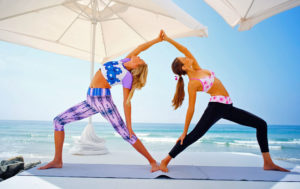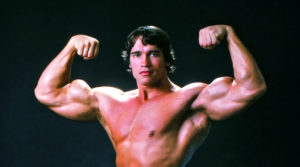Last year, my husband and I got into a curiously heated debate, along with two other couples, about whether or not it is manly to eat fruit. A surprising consensus emerged among the men, that fruit was categorically feminine. The argument then turned to the question of whether certain fruits could cross the line into manly territory. To paraphrase T.S. Eliot, a man might dare to eat a peach and remain secure in his masculinity; a banana, on the other hand, suggests entirely too much.
The genesis of this conflict is hard to explain, but the passions it inflamed were real. For all our avowed belief in the equality of the sexes, we still can’t help but assign gendered valences to even our most mundane behaviours and experiences, associations which can sometimes abruptly reverse polarity. Pink was once the boldest and most masculine of colours, until it suddenly wasn’t. Computer coding was the purview of female “calculators”, until it was overtaken in the Eighties by hungry hordes of Tech Bros.
And then there’s yoga: an athletic and spiritual practice originating among Indian men as early as the 10th century, and exported to the West by male gurus, beginning in the Twenties. One hundred years later, how things have changed. The gurus are gone — in some cases defenestrated by the #MeToo movement — and the entire enterprise has been fully subsumed by the same willowy-white-woman-wellness industrial complex that gave us Soul Cycle, Goop cleanses, and 500 different kinds of barre workouts. So complete is yoga’s feminine positionality in the West’s collective consciousness that it is now apparently necessary for niche varieties to crop up just for men.
So we have Broga, “a yoga class geared for men (where it’s okay if you can’t touch your toes)”. And among male professional athletes, per a recent New York Times write-up, we have “Joga”, a portmanteau of “yoga” and “jocks”, which suggests that something new, exotic and very, very manly is happening here. The JogaWorld website concurs: “Similar to Yoga, Joga involves physical postures, breathing, and relaxation techniques. However, where the goal of Yoga is to become more flexible and spiritually aware, Joga’s aim is to enhance performance, improve concentration, and reduce recovery time within the context of an athletic environment.”
That said, if there’s a difference between improving flexibility and awareness via yoga and enhancing performance and concentration with JOGA, it’s not readily apparent (even if, as I did, you have watched the better part of a 56-minute explanatory YouTube video titled, “How is Joga REALLY Different?”) Much like goat yoga, power yoga, hot yoga and the briefly trendy “vino vinyasa” classes that involved sipping chardonnay between poses, Joga is really just yoga by another name, and marketed to a particular audience. Nevertheless, one gets the sense that we should not tell the men as much, lest we spook them off the mat.
The gender trajectory of yoga is a complicated one, a winding journey through a decades-long miasma of gender stereotypes, fitness fads and shifting, sex-specific beauty standards about what constitutes an ideal physique. Jane Fonda, Gwyneth Paltrow and the ubiquity of the phrase “long and lean” in fitness marketing certainly played their part here. But so too has the Marvel Cinematic Universe — and before that, Fight Club — for which the male actors cast as superheroes adopt a much-vaunted and highly publicised fitness regimen that transforms them from normal-looking human beings into walking sides of beef.
The lithe male physique of the Seventies and Eighties, the sinuous grace of a Baryshnikov, or even the androgynous sensuality of a David Bowie, have been side-lined in recent decades. In their place is a creeping conviction: that the ideal man should be so swole that he can barely fit through a doorway without turning sideways, let alone be able to touch his toes or balance gracefully on one leg. One thinks of Kevin Kline in the film In & Out, receiving lessons in manliness from a cassette book: “Men do not dance. They work. They drink. They have bad backs. They do not dance!” the instructions sneer. “Think about John Wayne! Arnold Schwarzenegger! Arnold doesn’t dance, he can barely walk!”
Arnold also did not do yoga (or if he did, he wasn’t telling anyone about it). In fact, for men who look like him, the practice can be challenging: the massive muscles that are so essential to the contemporary superhero aesthetic don’t just compromise flexibility but also create a literal obstacle to various yoga poses that require you to wrap one body part around another. There’s a reason the male gurus who popularised yoga in the US were all built like string beans. But these days, the aesthetic distinction between the body of an athlete versus a movie star versus a bodybuilder is increasingly non-existent; these men all aspire to the same physique, and they all follow the same weightlifting regimen and ingest the same substances (legal or otherwise) to get there.
Meanwhile, the few male celebrities who do announce themselves yogis tend to be, if not exactly effeminate, then certainly not beacons of wholesome, Captain America-style masculinity. It’s a type embodied by Adam Levine, perhaps the best-known of the male Hollywood yoga evangelists, who famously told a reporter from Details: “You know what yoga’s good for? I’ll tell you what yoga is good for: Fuuuu-k-ing!” (all while pointing at his penis and gyrating, apparently). As for Arnold himself, he still seems to consider body awareness and flexibility something of a joke.
Of course, the things that make yoga unappealing to men also make it a natural home for women, who continue to aspire to a sylph-like aesthetic — and to gravitate toward workouts that promise to “sculpt” and “tone” the body without bulking it. At the entry level, yoga is more accessible to women — not just because our bodies are naturally more flexible and hence better suited to bending, twisting and stretching, but because of the vibes. Women are more drawn to group fitness classes in general and to the barefoot, spa-like aesthetic of yoga in particular. So, as night follows day, dozens of brands have cropped up to serve the bougie athleisure-wearing wine mom who is yoga’s perceived consumer base, which reinforces its feminine reputation. And that is not to mention the poses themselves, which do often look most lovely when expressed in the lines of a female body — or at least, a female body that looks terrific in a pair of skin-tight pants, which just happens to be the one currently deemed most desirable by the standards du jour. Put it all together, and it’s no surprise that this spiritual practice designed for young Asian men has now transformed, in the age of influencer culture, into a contemporary showcase for Western female beauty.
The irony is that yoga’s feminine trappings do not reflect an actual feminisation of the physical practice itself. The traditional yoga poses I teach — many of which haven’t changed for centuries — were designed with a male default in mind and require modification for female bodies, with their broader hips and lower centre of gravity. (“Hop your back foot wider!” I say, as female students struggle to square their hips in Warrior A.) Men may be intimidated (or repulsed) by yoga’s apparent incompatibility with their masculinity, but foundationally, it is still a practice ultimately made for them.
Still, if they need “Joga” — or broga, or whatever — to realise as much, it’s certainly better than the alternative: a world in which they do no yoga at all. Likewise, “bromance” — and its near sibling, the bromantic comedy — represented a silly but desperately needed correction to the notion that men couldn’t enjoy close same-sex friendships without there being something a little bit gay about them. In some senses, this yoga rebrand is just another example of the practice’s infinite capacity to be modified so that people with different bodies, different backgrounds and different limitations can access it.
Here’s something interesting, though: in recent years, as yoga has become synonymous with a particular brand of Western womanhood, it has also become a magnet for cancellation. In public op-eds and private Facebook groups, the yoga world’s self-appointed culture police are eternally wringing their hands over the “colonisation” of yoga by Westerners, or the scourge of those high-end leggings, or the permissibility of “namaslay” shirts. After all, any activity that reliably brings together a bunch of upper-middle-class white women in a single room must be problematic. About the emergence of male-dominated Joga, meanwhile, there has not been so much as a peep.
Disclaimer
Some of the posts we share are controversial and we do not necessarily agree with them in the whole extend. Sometimes we agree with the content or part of it but we do not agree with the narration or language. Nevertheless we find them somehow interesting, valuable and/or informative or we share them, because we strongly believe in freedom of speech, free press and journalism. We strongly encourage you to have a critical approach to all the content, do your own research and analysis to build your own opinion.
We would be glad to have your feedback.
Source: UnHerd Read the original article here: https://unherd.com/



